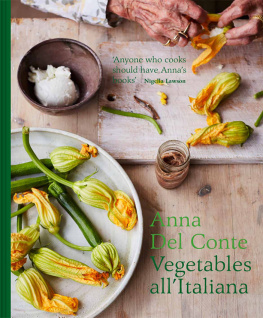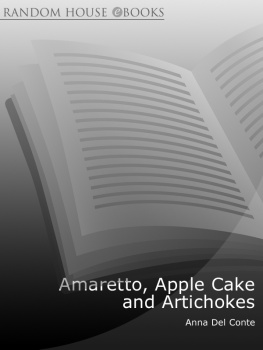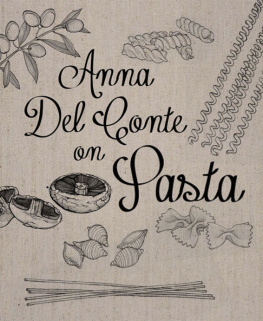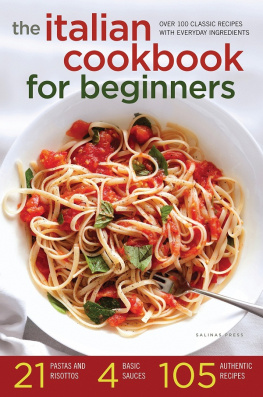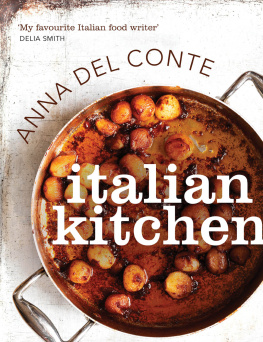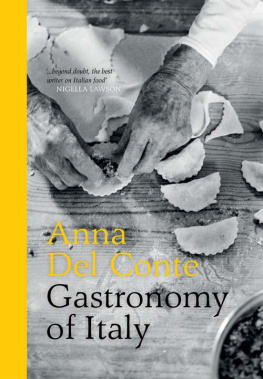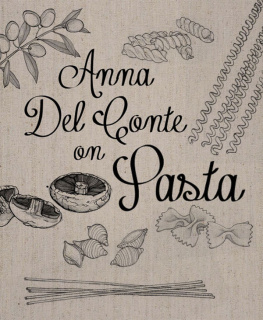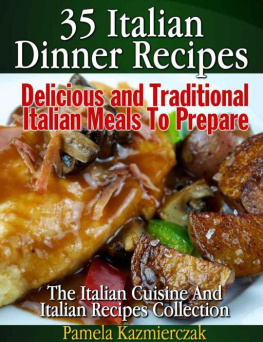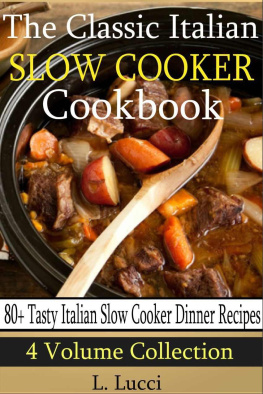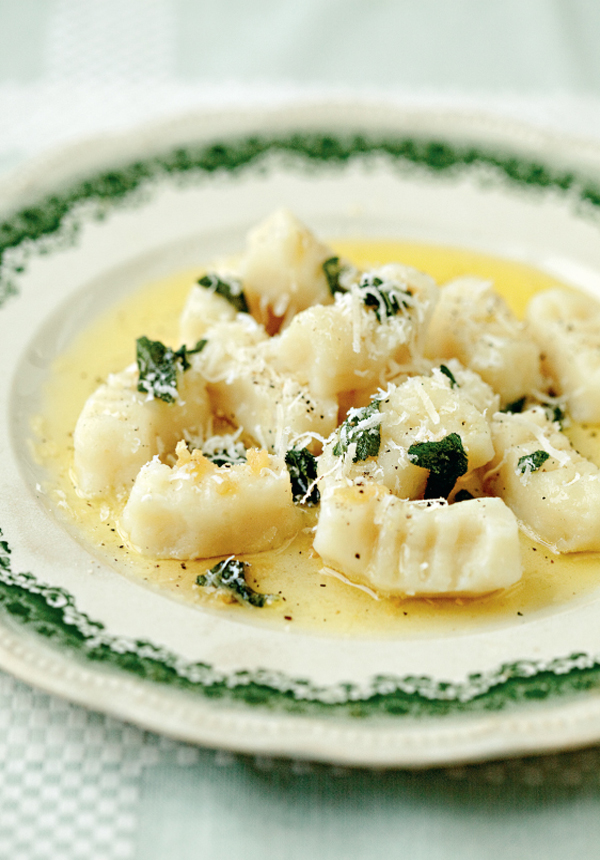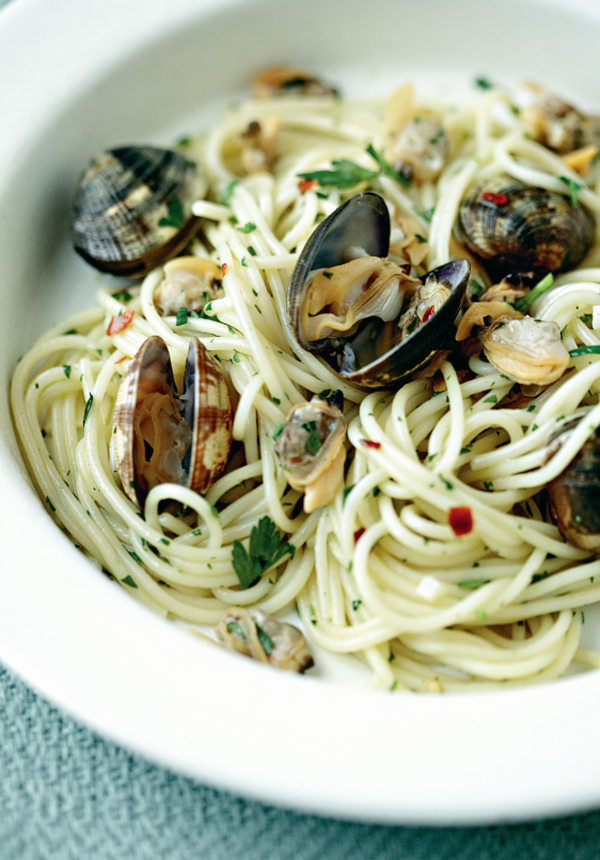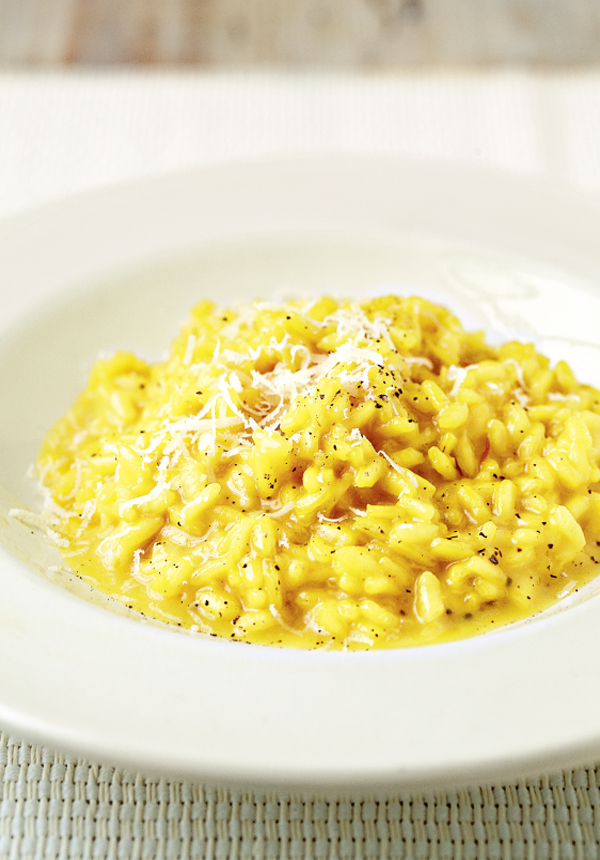Copyright
An Hachette UK Company
www.hachette.co.uk
First published in Great Britain in 2011 by
Hamlyn, a division of Octopus Publishing Group Ltd
Endeavour House
189 Shaftesbury Avenue
London
WC2H 8JY
www.octopusbooks.co.uk
Copyright Octopus Publishing Group Ltd 2011
Text copyright Anna Del Conte 2011
All rights reserved. No part of this work may be reproduced or utilized in any form or by any means, electronic or mechanical, including photocopying, recording or by any information storage and retrieval system, without the prior written permission of the publisher.
Anna Del Conte asserts the moral right to be identified as the author of this work.
Both metric and imperial measurements are given for the recipes. Use one set of measures only, not a mixture of both.
Ovens should be preheated to the specified temperature. If using a fan-assisted oven, follow the manufacturers instructions for adjusting the time and temperature. Grills should also be preheated.
This books includes dishes made with nuts and nut derivatives. It is advisable for those with known allergic reactions to nuts and nut derivatives and those who may be potentially vulnerable to these allergies, such as pregnant and nursing mothers, invalids, the elderly, babies and children, to avoid dishes made with nuts and nut oils. It is also prudent to check the labels of preprepared ingredients for the possible inclusion of nut derivatives.
The Department of Health advises that eggs should not be consumed raw. This book contains some dishes made with raw or lightly cooked eggs. It is prudent for more vulnerable people such as pregnant and nursing mothers, invalids, the elderly, babies and young children to avoid uncooked or lightly cooked dishes made with eggs.
Meat and poultry should be cooked thoroughly. To test if poultry is cooked, pierce the flesh through the thickest part with a skewer or fork the juices should run clear, never pink or red.
Anna Del Conte
Classic Italian Recipes
Introduction
There are 20 regions in Italy, each with its own classic recipes and within those regions are many towns and villages which all have their own classic recipes and variations.
One of my most reliable books, La Cucina dOro an anthology compiled by the Chefs Federation and the Accademia Italiana della Cucina lists 2,000 recipes, of which I would say around half are classic. In addition, there are many variations on classic recipes. For example, spaghetti with clams can be al pomodoro with tomatoes or in bianco without tomatoes. Vitello tonnato, a dish made with cold veal, is another recipe that has variations, both of which are considered classics. In Milan it is made without mayonnaise while in Piedmont mayonnaise is added.
So, from all these classic recipes, how could I choose only 75? I decided to use three criteria: first, I would choose dishes I enjoy cooking and eating. I cannot possibly test and taste something I am not keen on. Second, I would include recipes for which the ingredients are easily available and, more important, are good. And third, I selected the recipes I know have been most pleasing to my friends, family and many members of the public I have cooked for over the years. And, after over 40 years of writing recipes, I daresay I am quite a reliable judge.
I hope you will enjoy every recipe in this book. Individually, the recipes are full of taste and character and, as a collection, I hope they celebrate a central theme that simplicity is the key to all Italian cooking.
Key ingredients
I feel that the appeal of Italian cooking lies in the use of ordinary ingredients, ingredients that are staples in any 21st-century larder or cupboard. Most modern cooks now have olive oil, tinned tomatoes, risotto rice, oregano, basil and lemons to hand and know the basics of how to use them.
To make an Italian dish, nobody needs to buy a long list of ingredients which will be used once and, afterwards, will clutter up the kitchen cupboard for months, or even years, until they are past their best before date and you throw them out.
. These three dishes need only a few ingredients, including the main ingredient and the salt. No fusion, only the right amount of the right flavouring to enhance the basic flavour of the key ingredient of the dish.
Some ingredients you could keep to hand are:
- anchovies (fresh or preserved in salt or oil)
- capers
- a range of cheeses, such as mozzarella, Parmesan, pecorino, ricotta, fontina, Gorgonzola, dolcelatte and mascarpone
- hams, such as prosciutto crudo, parma and speck
- polenta
- pulses
- risotto rice
- tomatoes
- mushrooms
- red wine vinegar
- balsamic vinegar
Throughout the book I use unsalted butter, Italian 00 flour and sea salt, the same ingredients that are used in Italy. I use two kinds of oil: olive oil and extra virgin olive oil. For cooking I use the pure olive oil, not the extra virgin, which I keep for salads, fish and other dishes when the flavour of the oil must come through. I have specified this in every recipe and its advisable to follow what I suggest as good ingredients are crucial to good food. It used to be that you had to go exclusively to Italian delis for good quality produce, but these days most ingredients are available from supermarkets.
Basic skills and recipes
Everyone should be able to create classic Italian recipes at home, whatever their skills as a chef, but throughout the book, I have highlighted some basic skills and recipes that you can go on to use for other recipes. For example, the simple bolognese sauce, with its fresh, pure ingredients, on ) for homemade pizzas that are far better than shop-bought ones.
Kitchen equipment
A kitchen well stocked with chopping boards, sharp knives and a range of pans and baking tins in different sizes is really all youll need. Be sure to have a large saucepan. You cannot cook pasta properly in a small saucepan as the pasta needs plenty of space to move around in the boiling water to stop it sticking to the bottom of the pan.
ANTIPASTI
Bruschetta
MAKES 6 SLICES
- loaf of coarse white bread, such as Pugliese
- 2 garlic cloves
- 6 tablespoons olive oil 6 ripe tomatoes
- 3 teaspoons wild fennel seeds
- sea salt and pepper
The original Roman bruschetta is topped with garlic and oil. This is a Tuscan bruschetta, made with ripe tomatoes and a sprinkling of wild fennel seeds


